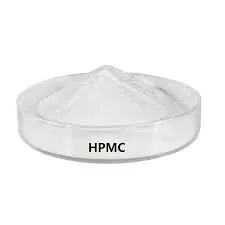
Gus . 17, 2024 13:49 Back to list
High-Performance HPMC Tile Adhesive for Superior Bonding and Durability Solutions
Tile Adhesive HPMC A Key Ingredient for Strong and Durable Tile Installations
Tile adhesive plays a crucial role in ensuring the stability and longevity of tile installations. Among the various components that contribute to the effectiveness of tile adhesives, Hydroxypropyl Methylcellulose (HPMC) stands out as a vital ingredient. This article delves into the significance of HPMC in tile adhesives, its properties, benefits, and applications, highlighting why it is an essential material in the construction and renovation industry.
HPMC is a non-ionic, water-soluble polymer derived from natural cellulose. Its unique chemical structure offers several advantageous properties that make it ideal for use in tile adhesives. One of the primary functions of HPMC is to improve the workability and application properties of tile adhesives. It enhances the adhesive's consistency, allowing for smoother application and better bonding during installation. Moreover, HPMC helps to control the viscosity of the adhesive, ensuring that it remains easy to spread and manipulate, even in challenging conditions.
Tile Adhesive HPMC A Key Ingredient for Strong and Durable Tile Installations
Another advantage of HPMC is its resistance to sagging. When tiles are applied to walls or ceilings, it is essential that the adhesive holds the tiles in place without slipping. HPMC-enhanced tile adhesives have a thixotropic nature, which means they can maintain their shape under gravitational forces, providing a stable hold for tiles during the installation process. This characteristic not only enhances safety but also improves the overall aesthetic of the finished project.
tile adhesive hpmc

HPMC also contributes to the flexibility and tensile strength of tile adhesives. Flexibility is vital in preventing cracks and damage to both the adhesive layer and the tiles themselves, especially in areas subject to movement or thermal expansion. HPMC-modified adhesives can absorb stress and movement, ensuring that the tiles remain secure and undamaged over time. This flexibility makes HPMC an ideal choice for applications in various environments, including moist areas like bathrooms and kitchens, where expansion and contraction are more pronounced.
Furthermore, HPMC is known for being environmentally friendly. Since it is derived from natural sources, it is biodegradable and poses fewer health risks compared to synthetic additives. When selecting materials for tile installations, using HPMC-based adhesives not only supports durability and performance but also aligns with eco-conscious building practices.
In summary, the incorporation of Hydroxypropyl Methylcellulose in tile adhesives significantly enhances their performance characteristics. Its ability to improve workability, retain water, resist sagging, and provide flexibility makes it an indispensable ingredient in the formulation of quality tile adhesives. With its environmental benefits, HPMC also appeals to builders and contractors who prioritize sustainability in their projects. Whether for new constructions or renovation tasks, the use of HPMC-based tile adhesives ensures that tile installations are not only strong and durable but also contribute to a more sustainable and responsible construction industry.
As the demand for efficient and reliable building materials continues to grow, understanding and utilizing key components like HPMC will be essential for achieving optimal results in tile installation projects.
-
Unlocking the Benefits of HPMC Products: A Gateway to Versatile Applications
NewsAug.07,2025
-
Tile Bonding Cellulose: The Key to Superior Adhesion and Durability
NewsAug.07,2025
-
Hydroxypropyl Methylcellulose Powder: The Versatile Component in Modern Pharmaceuticals
NewsAug.07,2025
-
Hydroxyethyl Cellulose: The Versatile Solution for Various Industries
NewsAug.07,2025
-
Hydroxyethyl Cellulose (HEC): The Versatile Polymer for Various Applications
NewsAug.07,2025
-
The Ultimate Guide to Mortar Bonding Agent
NewsAug.06,2025







